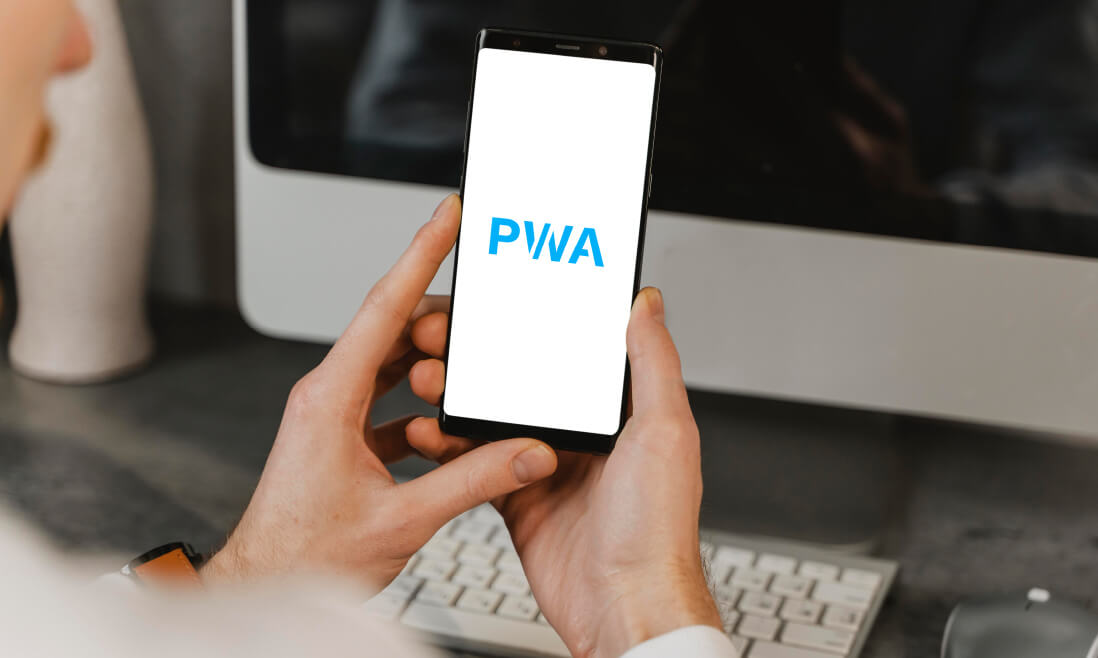Have you ever wished that your favorite websites worked faster, were available even when you’re offline, and felt just like the apps on your phone?
Well, there’s a technology that’s making this possible, and it’s called Progressive Web Apps, or PWAs for short.
In this blog post, we’re diving into the world of PWAs to uncover what they are, how they work, and why they might just be the future of web applications.
With PWAs, websites aren’t just websites anymore; they’re supercharged to offer you a better, more app-like experience right in your browser.
Contents
What is a Progressive Web App?
A Progressive Web App is a website that utilizes modern web technologies to deliver an experience comparable to a native mobile application. PWAs bring together the best parts of websites and the apps you download from app stores. They’re created using common web tools—HTML for structure, CSS for design, and JavaScript for functionality.
There are three main reasons why PWAs are awesome:
- They’re Reliable: You know how annoying it is when a website won’t load because your internet is slow or you’re offline? Well, PWAs fix that problem. They load quickly and can even work when you don’t have an internet connection, so you can keep using them without any trouble.
- They’re Fast: Have you ever clicked on something on a website and had to wait forever for it to respond? PWAs are designed to be super fast, so when you tap on something, it reacts instantly. This makes using PWAs feel smooth and enjoyable, just like your favorite apps.
- They’re Engaging: PWAs can take over your whole screen, making you feel like you’re using an app, not a website. They’re built to grab your attention and provide an experience that’s as good as, if not better than, an app from the app store.
Why Are Progressive Web Apps Great for Everyone?
Progressive Web Apps bring a bunch of cool benefits that make both users and businesses pretty happy. Let’s break down why they’re so great:
For Users:
- Super Quick and Always Works: Whether you’re on fast Wi-Fi or a slow mobile network, PWAs load quickly and keep running smoothly. This means less waiting around for things to load, which is always a good thing.
- Works Offline: Ever wanted to use an app but couldn’t because you were offline? PWAs fix that by letting you access key stuff even without an internet connection.
- Feels Like an App: Using a PWA feels just like using a regular app you’d download from an app store. This means you get a cool, full-screen experience without any browser stuff getting in the way.
- Easy to Get: You can add a PWA right to your home screen, so opening it is just a tap away. No need to visit an app store or download anything big.
- Doesn’t Take Much Space: Unlike traditional apps, PWAs don’t fill up your phone’s storage, which is great if you’re running out of space.
For Businesses:
- Better Performance: Because PWAs are fast and reliable, people are more likely to stick around and use them. This can mean more people buying things or signing up, which is great for any business.
- Easier to Find: Search engines like Google can find PWAs, making them easier for new users to discover.
- Happier Users: The cool app-like experience and ability to use it offline means people enjoy using PWAs. Happy users are more likely to keep using an app and recommend it to others.
- One App, Everywhere: Instead of making different apps for phones, tablets, and computers, businesses can make one PWA that works on any device. This saves a lot of time and effort.
- No Waiting on App Stores: Updating a PWA doesn’t involve app stores, so new features can be added quickly without waiting for approval.
Comparing Progressive Web Apps and Native Apps
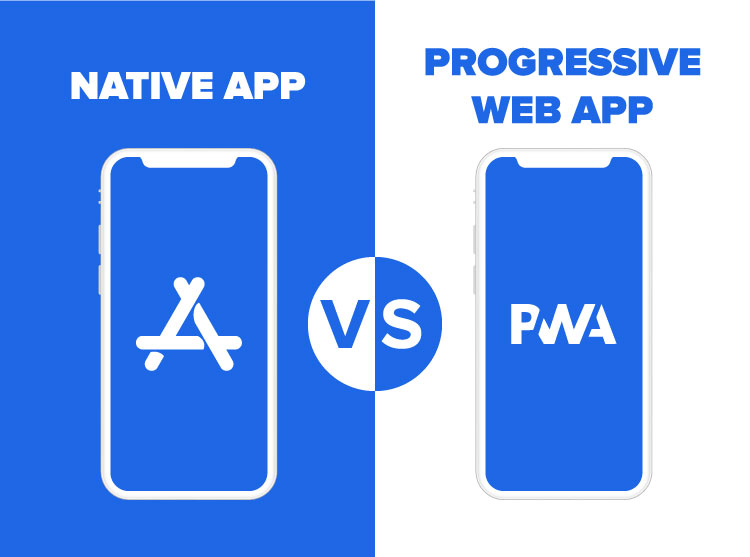
When you’re deciding between a PWA and a native app, it’s like choosing between two great flavors of ice cream. Both have their perks, but they’re best in different situations. Let’s take a closer look at PWAs and native apps to see how they stack up.
Progressive Web Apps:
Pros:
- Work Everywhere: You write the code once, and it works on any device, whether it’s a phone, tablet, or computer.
- Faster and Cheaper to Make: It takes less time and money to build a PWA than to create separate apps for different operating systems.
- Easy to Find: Since they’re on the web, search engines can show them in search results, making them easier for people to discover.
- No Download Needed: Users can add them directly to their home screen without needing to download them from an app store.
- Works Offline: They can do basic stuff even if you’re not connected to the internet.
- Updates on the Fly: Updating a PWA is simpler since you don’t have to wait for app store approvals.
Cons:
- Limited Device Features: PWAs might not be able to use all the fancy features of your device, like an advanced camera.
- Varied Performance: They’re generally fast, but might not be as smooth as a native app that’s been fine-tuned.
- Browser Differences: Some features might work differently depending on the browser you’re using.
Native Apps:
Pros:
- Top Performance: These apps are designed for specific devices, so they can run super smoothly and use all of a device’s capabilities.
- Full Feature Use: They can access and use all the parts of your device, like the camera and sensors, to do more complex stuff.
- Visibility in App Stores: Being in an app store can make it easier for more people to find and download the app.
- Well-supported: There are lots of tools and resources available for building these apps.
Cons:
- More Expensive: Developing separate apps for different platforms (like iOS and Android) can be costly and take a lot of time.
- App Store Rules: You have to follow app store guidelines, and updates need to be approved, which can slow things down.
- Need to Download: Users have to go through the process of downloading and installing the app from an app store.
When to Choose Which?
Go for a PWA when you want a quick, affordable way to reach users on any platform, especially if you’re keen on making your app easy to discover and want it to work offline. They’re also a smart pick if you’re looking to get your app out there without the fuss of app store rules.
Choose a native app if you need the best performance possible and want to use all the features of a device. They’re ideal if you’re aiming for complex tasks that a PWA might not handle, or if being in an app store is part of your strategy.
Remember, technology keeps evolving, and PWAs are getting better at doing things that were once only possible with native apps. So, the gap between the two is getting smaller, making the choice less about limitations and more about what’s right for your specific needs.
Understanding the Technical Needs for a Progressive Web App

To make a website a Progressive Web App, it needs to have some special features. Think of these features as the secret ingredients that turn a regular website into a superhero app that can do more cool stuff. Let’s look at what these are:
1. Web App Manifest
This is a special file in the format called JSON, which might sound complicated, but it’s just a way for the website to tell your device, “Hey, this is how I should look and act when you use me as a PWA!” It includes important details like:
- The name of the app and a shorter name for small screens.
- Icons that look good in different sizes.
- The starting page of the app.
- How the app should display (like taking up the whole screen).
- The colors to use for the app’s theme and background.
2. HTTPS
Ever notice that some website addresses start with “https” instead of just “http”? That extra “s” stands for “secure.” PWAs need to be on websites that are secure because it keeps users safe from hackers. It also lets the app use some advanced features that only work in a secure setting.
3. Service Worker
This is a clever piece of JavaScript code that works quietly in the background. You can think of it as the app’s helper, doing important jobs like:
- Keeping copies of files so the app can load quickly or even work offline.
- Waiting until there’s a good internet connection to do certain tasks, like sending messages.
- Allowing the app to send notifications to the user, even if the app isn’t open at the moment.
How to Develop a Progressive Web App

Creating a Progressive Web App is like building a bridge between regular websites and mobile apps, bringing the best of both worlds to users. Let’s walk through the steps to develop a PWA, making sure it’s both powerful and easy to use.
Step 1: Planning & Design
First things first, you need a plan. Decide what your PWA needs to do and what goals it should achieve. Think about the main actions users will take and design the app to make these actions natural and straightforward.
This part is all about crafting an experience that feels good and works well, even when there’s no internet connection. Planning which features should be available offline is a key part of this stage.
Step 2: Development
Now, it’s time to build. Using the core web languages – HTML, CSS, and JavaScript – you start creating your app.
If you want to make things a bit easier, you can use a framework like React, Vue.js, or Angular. These tools give you a structure to organize your app and can save you some time.
During this phase, you’ll also create the Web App Manifest, the file that tells devices how your app should look and behave when installed.
And don’t forget the service worker! This is the magic behind offline functionality, caching, and push notifications. Libraries like Workbox can help simplify coding the service worker.
Step 3: Testing and Debugging
With your PWA built, it’s crucial to make sure it works everywhere it’s supposed to. Test it out on different browsers, devices, and operating systems to catch any glitches or issues.
Tools like Lighthouse are great for checking if your app loads quickly, responds well, and can handle being offline. If you find problems, use the browser’s developer tools to figure out what’s wrong and fix it.
Step 4: Deployment
After testing, it’s time to launch your PWA to the world. Make sure your hosting setup is secure, as PWAs need to run over HTTPS to protect user data and privacy.
Now’s also a good time to think about how you’ll let people know about your app and encourage them to install it.
Step 5: Maintenance & Updates
Even after your PWA is out there, the work isn’t done. Listen to what users have to say about your app and use their feedback to make it even better.
Since PWAs don’t need to go through app store approvals for updates, you can quickly release new features, fix bugs, and keep your content fresh.
Developing a PWA might seem like a big project, but by breaking it down into these steps, you can manage it piece by piece. The result is an app that offers a fantastic user experience, whether online or offline, on any device.
5 Real World Examples of Progressive Web Apps
1. YouTube
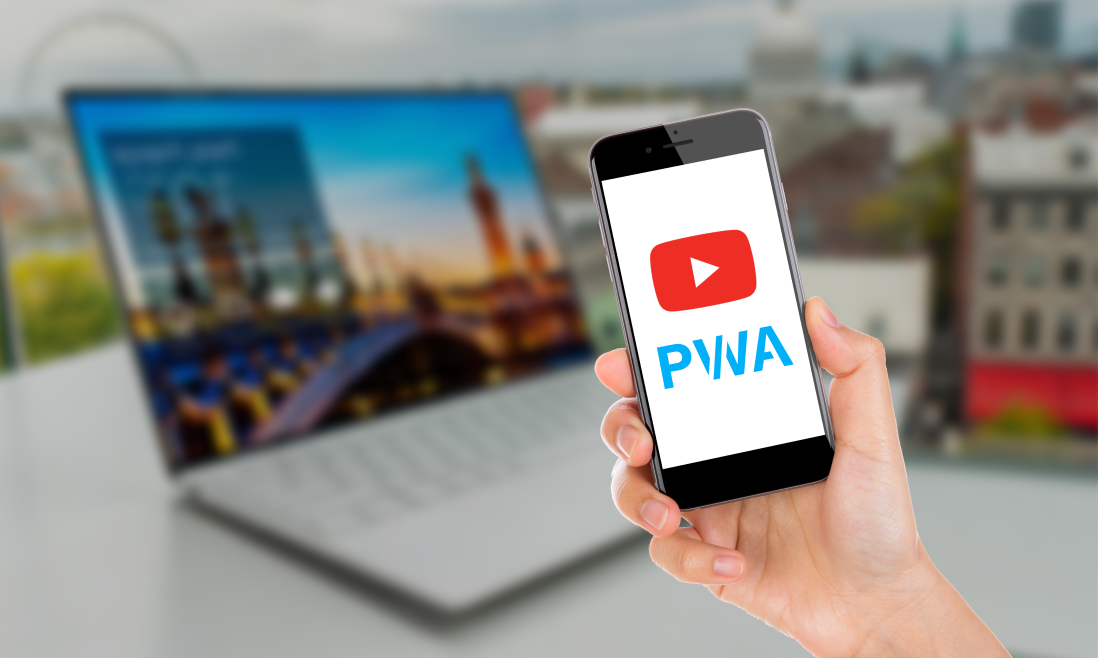
One of the coolest examples of a Progressive Web App (PWA) is YouTube. Yes, that YouTube – the place where you can watch all sorts of videos, from music videos to tutorials to your favorite bloggers.
The YouTube PWA offers a simple, yet powerful way to watch videos on your computer or mobile device. It’s like a lighter version of the YouTube we all know, but designed to be super fast and to give you that app-like feeling, even though you’re using it through a web browser.
What makes the YouTube PWA so great is its focus on speed and efficiency. Since it’s a PWA, it loads quickly and even works well if your internet connection is not the strongest.
Plus, you can add it directly to your home screen, so starting up YouTube is just a tap away, just like any other app you love using.
2. Outlook
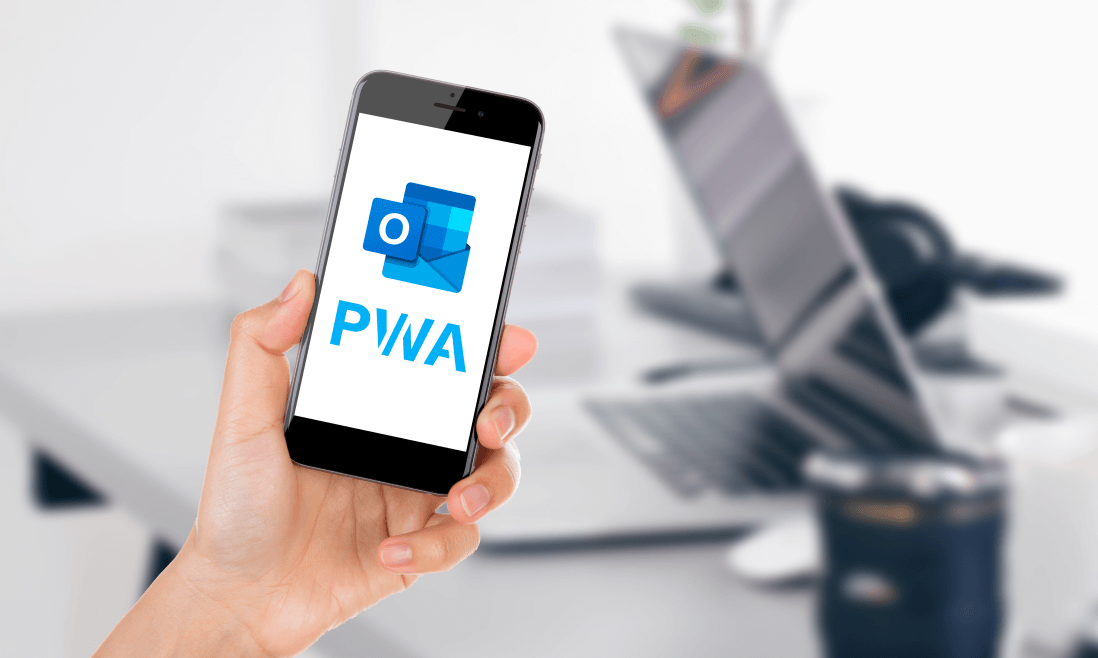
Outlook, widely known for its robust email and calendar management features, offers a Progressive Web App that’s changing the game for users who rely heavily on staying organized and connected.
For starters, the Outlook PWA is designed for those who need their email and calendar at their fingertips, regardless of their internet connection. It’s a lifesaver for anyone who’s found themselves struggling with slow or unreliable Wi-Fi, offering reliable access to Outlook’s core functionalities without missing a beat.
Moreover, if you’re someone who prefers the streamlined experience of using an app over navigating through browser tabs, the Outlook PWA is your go-to solution.
It eliminates the clutter of having multiple tabs open, allowing you to access your Outlook directly from your desktop or mobile home screen with just a click or tap.
3. Facebook
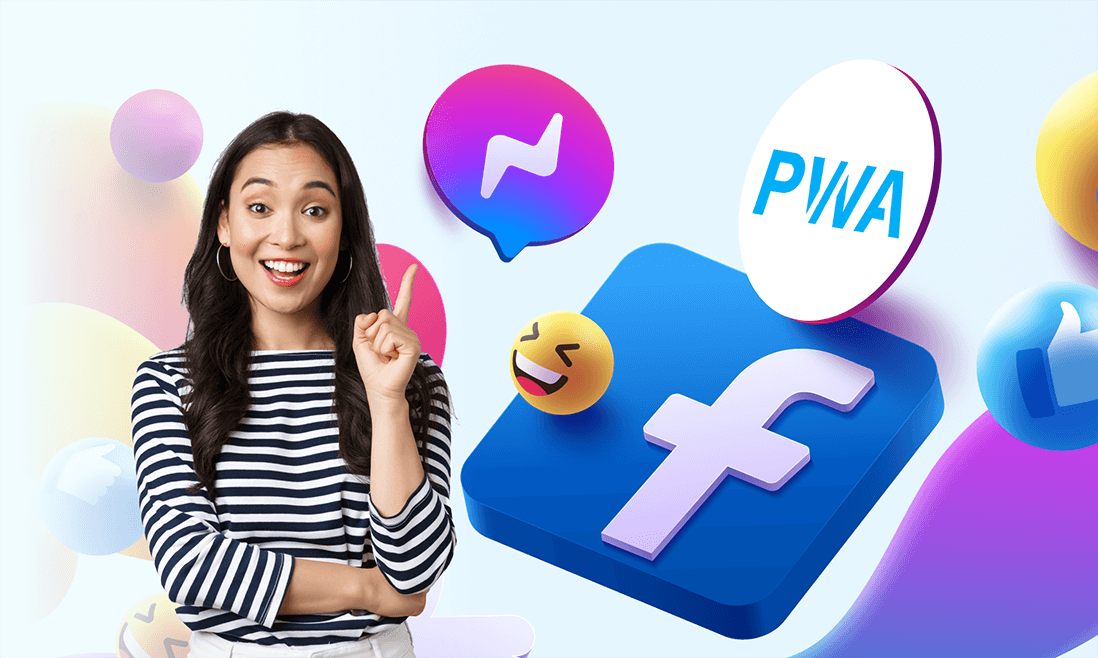
Facebook, a platform synonymous with social connectivity, has embraced the Progressive Web App technology to make its services more accessible, especially in regions where internet connectivity might pose a challenge.
The Facebook PWA ensures that no matter where you are or what device you’re using, staying connected with friends, family, and the world around you is smoother and more reliable.
Internet speed and reliability vary greatly around the globe. Recognizing this, Facebook introduced its PWA to ensure that more people could enjoy a high-quality Facebook experience, even in areas with slow internet connections.
This approach highlights Facebook’s commitment to inclusivity, ensuring that the digital divide is narrowed and more individuals can stay informed and connected.
4. Reddit
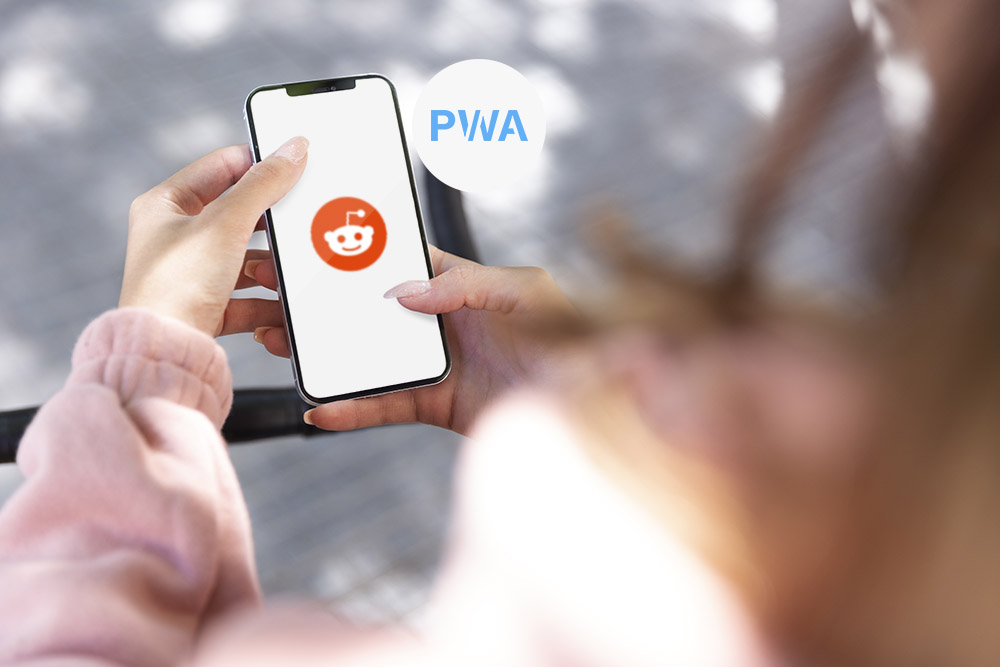
Reddit, the vast network of communities where people can dive into their interests, hobbies, and passions, has taken a significant step to enhance user experience, especially for desktop users.
Recognizing the need to simplify the transition from web browsing to app usage, Reddit has embraced Progressive Web App technology.
Reddit’s journey towards adopting PWA technology stems from a desire to encourage more of its users to engage with the platform through a more app-like experience, even when accessing it from desktop computers.
The goal was clear: make it almost effortless for users to switch to using apps, without the typical drawbacks.
5. Pinterest
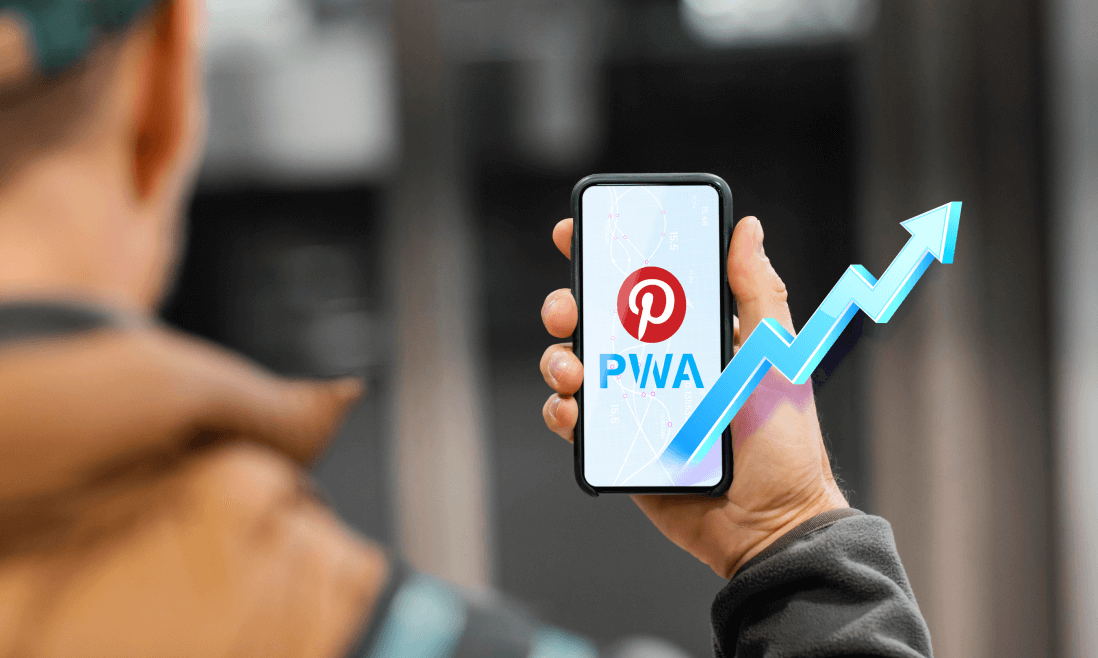
Pinterest, the visual discovery engine for finding ideas like recipes, home and style inspiration, and more, has recognized the unique challenges of growing its user base in emerging markets. These challenges include limited data plans and the prevalence of less powerful devices among potential users.
To tackle these obstacles head-on, Pinterest turned to PWA technology as a strategic solution to ensure broader and more effective access to its platform.
Emerging markets are crucial areas for digital platforms seeking growth, but they come with specific hurdles. Many users in these regions face restrictions in terms of data usage and do not possess the high-end devices that can handle data-heavy applications.
Pinterest’s decision to develop a PWA was driven by the need to provide a lightweight and accessible version of their platform. The Pinterest PWA requires significantly less data to load and is designed to perform well on any device, regardless of its power or capacity.

